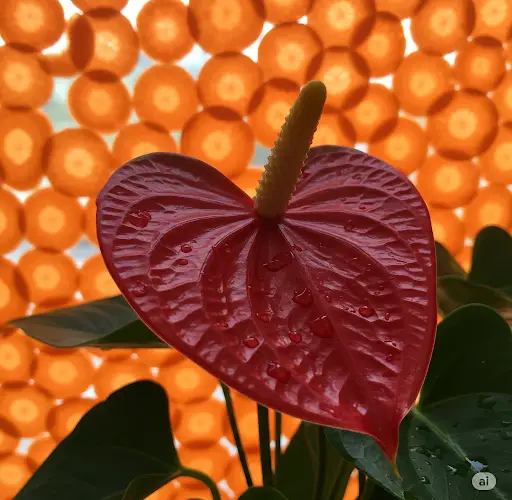Anthuriums are beloved for their exotic, glossy foliage and striking, long-lasting blooms. However, getting these tropical plants to flower consistently indoors can be a challenge. If your anthurium is growing healthy leaves but refusing to bloom, the solution might be simpler than you think—and it could be sitting in your refrigerator right now.
Carrots, often praised for their benefits to human health, can also do wonders for flowering plants. With just a few slices of carrot a month, you can naturally boost your anthurium’s blooming potential, thanks to the vegetable’s rich supply of nutrients and organic compounds. This easy and budget-friendly method is an excellent alternative to synthetic fertilizers.
Why Carrots Help Anthuriums Bloom
Carrots are packed with a variety of nutrients that directly support plant health and flowering. Here’s why they’re so effective:
-
Potassium: Vital for flower formation and development. It helps strengthen stems and supports the metabolic processes involved in blooming.
-
Phosphorus: Encourages strong root growth and improves the plant’s ability to transfer energy, both critical during blooming phases.
-
Calcium and Magnesium: Promote healthy cell function and help prevent leaf yellowing and weak stems.
-
Beta-Carotene (Vitamin A): While not directly used by plants in the same way as humans, organic matter like beta-carotene improves microbial activity in the soil, leading to healthier root environments.
When carrots are added to the soil, they act as a natural fertilizer, breaking down slowly and feeding the plant over time.
How to Use Carrots for Anthurium Blooms
Incorporating carrots into your anthurium care routine is simple. You can use fresh slices, puree, or even carrot water. Below are the most effective methods:
1. Fresh Carrot Slices
-
Slice one small carrot into thin rounds.
-
Place the slices directly on the surface of the soil around your anthurium.
-
Gently press them into the top layer, but do not bury them deeply—this helps avoid rot.
-
Water as usual.
As the slices decompose, they release nutrients gradually into the soil. Repeat this once every 3–4 weeks.
2. Carrot Puree Fertilizer
-
Blend one small carrot with half a cup of water until smooth.
-
Mix the puree into the soil around your plant, or stir it into the top inch of soil in the pot.
-
This method is more immediately bioavailable and ideal for plants showing signs of slow growth.
Use this homemade fertilizer once a month for best results.
3. Carrot Water Spray
-
Soak a handful of shredded or chopped carrots in 1 liter of water overnight.
-
Strain and use the liquid to water your anthurium.
-
This “carrot tea” can be used every two weeks to support foliage and blooms.
This method is especially useful if you prefer not to have organic matter sitting on the soil surface.
Important Tips for Success
To get the best results from using carrots with your anthurium, keep these practical tips in mind:
-
Avoid Overuse: Too much fresh organic matter can attract pests or promote mold. Stick to once-a-month applications.
-
Use Fresh, Clean Carrots: Rinse well before use to remove dirt or chemicals, especially if not organic.
-
Monitor Soil Moisture: Don’t let the soil become soggy, especially with organic material added—ensure good drainage.
-
Combine with Proper Care: Carrots are a boost, not a miracle fix. Your plant still needs the right light, humidity, and watering schedule to thrive.
Additional Care Tips to Encourage Blooming
Alongside natural feeding with carrots, maintaining the right growing conditions will ensure your anthurium stays healthy and ready to bloom:
-
Lighting: Bright, indirect sunlight is key. Avoid direct rays, which can burn the leaves.
-
Humidity: High humidity (above 60%) mimics the plant’s native tropical environment. Use a humidifier or mist regularly.
-
Temperature: Keep the room between 20–27°C (68–81°F) for optimal growth.
-
Repotting: Refresh the potting mix every 1–2 years. A light, airy substrate with orchid bark or perlite is ideal.
-
Regular Cleaning: Wipe dust off the leaves with a damp cloth to allow better light absorption.
Final Thoughts
Carrots are more than just a healthy snack—they’re a natural, nutrient-rich way to encourage flowering in your anthuriums. By adding just a few slices or a bit of carrot puree to your plant’s care routine, you can provide a slow-releasing, organic fertilizer that promotes stronger roots and more consistent blooming.
This method is inexpensive, easy to implement, and safe for both indoor and outdoor plants. Give it a try, and watch your anthurium respond with vibrant, lush flowers that brighten your space all year round.



